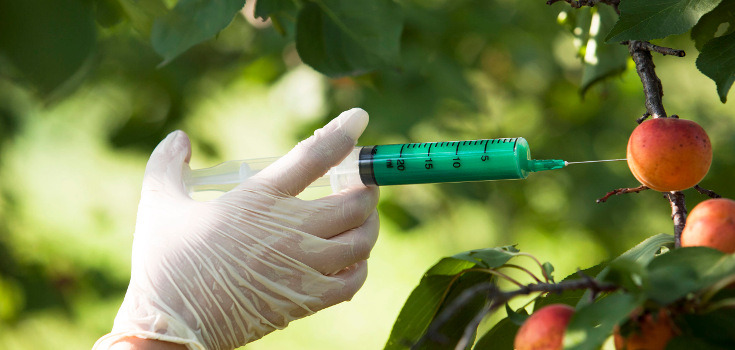When it comes to food science research, the most common debates are about science and which sources or studies are correct, or more legitimate. Fact checking and deciphering which studies are biased and which ones aren’t can be exhausting as well as confusing. However, sometimes the truth is blatant.
An example of a blatant truth are the facts surrounding the ineffectiveness of the Golden Rice Project, which was launched by the International Rice Research Institute (IRRI), a group founded in 1959 by the Rockefeller Foundation.
Allegedly aimed at preventing death from malnutrition in Southeast Asia, the Golden Rice Project set out to create rice genetically modified to contain three beta-carotene biosynthesis genes.
GMO Golden Rice 2 launched in 2005 recently fails field trials
In 2005, the Switzerland-based seed company Syngenta partnered with the IRRI and rolled out a new rice variety called Golden Rice 2 (GR2), a product that reportedly produced 23 times more carotenoids than the original Golden Rice.
Although no studies exist on the integrity of beta-carotene produced by Golden Rice, GMO pushers falsely claim that GR2 would save millions of children, as reported by Mike Adams in 2013.
Despite being touted by the biotech industry as a potential resolution for world hunger and malnutrition, GMO Golden Rice recently failed its field trials. It also hasn’t been proven effective or safe to eat, according to GMWatch.org.
As of March 2014, the IRRI reported that field trials conducted on GR2 in the Philippines showed mixed results. While the target level of beta-carotene was reportedly achieved, the average yield of GR2 was “unfortunately lower” than that of comparable local varieties that are already preferred by Filipino farmers.
In regard to GR2’s agronomic performance, the IRRI says, “[M]ore research is needed, with greater focus on increasing yield.” The IRRI also admitted that it’s unclear whether or not GMO Golden Rice is safe or even works.
“[I]t has not yet been determined whether daily consumption of Golden Rice does improve the vitamin A status of people who are vitamin A deficient and could therefore reduce related conditions such as night blindness,” wrote the IRRI in February 2013.
Clueless GMO pushers blame environmental groups for deaths caused by starvation in developing countries
Despite this information, biotech shills such as former UK environmental secretary Owen Paterson continue to spout blatant lies about GM crops, particularly the IRRI’s GMO Golden Rice.
A press release[PDF] sent from UK 2020, a right-wing think tank founded by Paterson, actually accuses the European Union and environmental groups of “condemning millions of people in developing countries to starvation and death by their stubborn refusal to accept the benefits of genetically modified crops and other potentially life-saving advances in plant sciences.”
In a speech to the GMO industry-funded lobby group International Service for the Acquisition of Agri-Biotech Applications, Paterson claimed that GMO Golden Rice would have already saved millions of lives if it weren’t for “the ongoing opposition of well-financed anti-GM activist groups and their ceaseless campaign to frighten people and pressure governments to keep Golden Rice off the market.”
British Conservative Party politician Owen Paterson blames Greenpeace for leading the opposition to GMO Golden Rice
This accusation is completely false AND reckless, when truthfully it is the failure of 20 years of scientific research backed by millions of dollars that led to the ineffectiveness of GMO Golden Rice.
Further, Paterson says the only thing holding the world back from a “second Green Revolution” are Westerners’ food “fetishes” that are being imposed on struggling farmers in third-world countries.
What Paterson fails to acknowledge, of course, is the shared opposition held by many farmers, citizens and scientists in the Philippines that have rejected GMO Golden Rice due to the plentiful existence of other cheap sources of beta-carotene that work more effectively.








